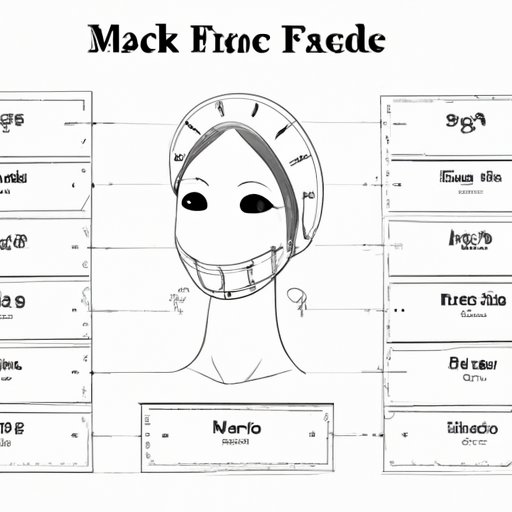
Introduction
Wearing a mask has become a part of our daily lives due to the ongoing COVID-19 pandemic. However, finding the right size mask can be a challenge. A mask that is too loose may not provide adequate protection, while a mask that is too tight can be uncomfortable and limit breathing. In this article, we will explore how to size your face with a mask to ensure the best possible fit.
Measure Your Face
Measuring your face is the first step in finding the right size mask. Use a soft measuring tape and start at the bridge of your nose, then measure across your cheeks and end at your ears. Write down your measurements to refer to later when using a size chart.
For accuracy while measuring, make sure the measuring tape is snug but not too tight on your face. If you are using a string to measure, make sure it is not twisted or stretched while measuring.
Use a Size Chart
A size chart can help you find the right size mask based on your measurements. Most mask manufacturers provide a size chart on their website or on the product packaging. Use your measurements to determine which size is best for you.
When using a size chart, look for measurements such as nose-to-chin and ear-to-ear. These measurements can help determine the best fit for your face. It is also important to consider the elasticity of the mask material as this can affect the fit.
Try it On
Trying on a mask before purchasing is crucial to ensure proper fit. When trying on a mask, make sure it covers your nose and mouth without any gaps. Check for any discomfort or difficulty breathing. If the mask is too big or too small, consider a different size or style.
Signs of an ill-fitting mask include gaps between your face and the mask, slipping off your nose, and difficulty breathing. These signs could compromise your protection and negate your efforts to guard yourself and others against the spread of germs.
Consider Adjustable Masks
Adjustable masks have become increasingly popular due to their ability to tailor to each individual’s face shape and size. Look for masks with adjustable ear loops, nose wires, or even darts to perfect the fit.
When adjusting the ear loops, make sure they are not too tight but still secure. Nose wires should be molded to fit the shape of your nose for optimal coverage and comfort. Darts can also be useful to customize the fit for different face shapes and sizes.
Choose the Right Material
The material of your mask can also affect the fit. Some materials, such as cotton, can shrink when washed, thus affecting the size of your mask. Other materials such as polyester might be more stable but can also limit breathability and adherence to the face.
Consider your needs when choosing the material of your mask. For example, if you require a mask to wear during physical exercise, choose a material that’s lightweight and breathable. For colder weather, choose a mask that has a soft lining that keeps you warm.
Be Aware of Face Shape
Different face shapes may require different mask sizes. For instance, people with oval faces might need a smaller size than people with round faces. Additionally, some people have longer noses; therefore, they might need a mask with a longer nose wire to provide adequate coverage.
When choosing a mask based on face shape, also check the dimensions of the mask. Consider masks that have a variety of dimensions to fit various face shapes and sizes.
Ask for Recommendations
It is always beneficial to seek recommendations from others who may have had a similar experience in sizing their face with a mask. This includes physicians, friends, family members, or companies that specialize in mask manufacturing. You can ask for advice on which mask brands or styles might work best for your individual face shape.
Once you’ve gathered recommendations, take into account your own measurements and preferences when making a decision. Sometimes, companies may offer a demo or free trials for masks. Take advantage of these opportunities to test out masks and find the best size and fit for your needs.
Conclusion
Finding the right size mask is crucial in ensuring safety and preventing the spread of germs. By measuring your face, using a size chart, trying on masks, considering adjustable masks, choosing the right material, being aware of face shape, and seeking recommendations, you can find the perfect fit for you. Remember to be mindful of the fit of your mask as it makes a difference in your protection.





